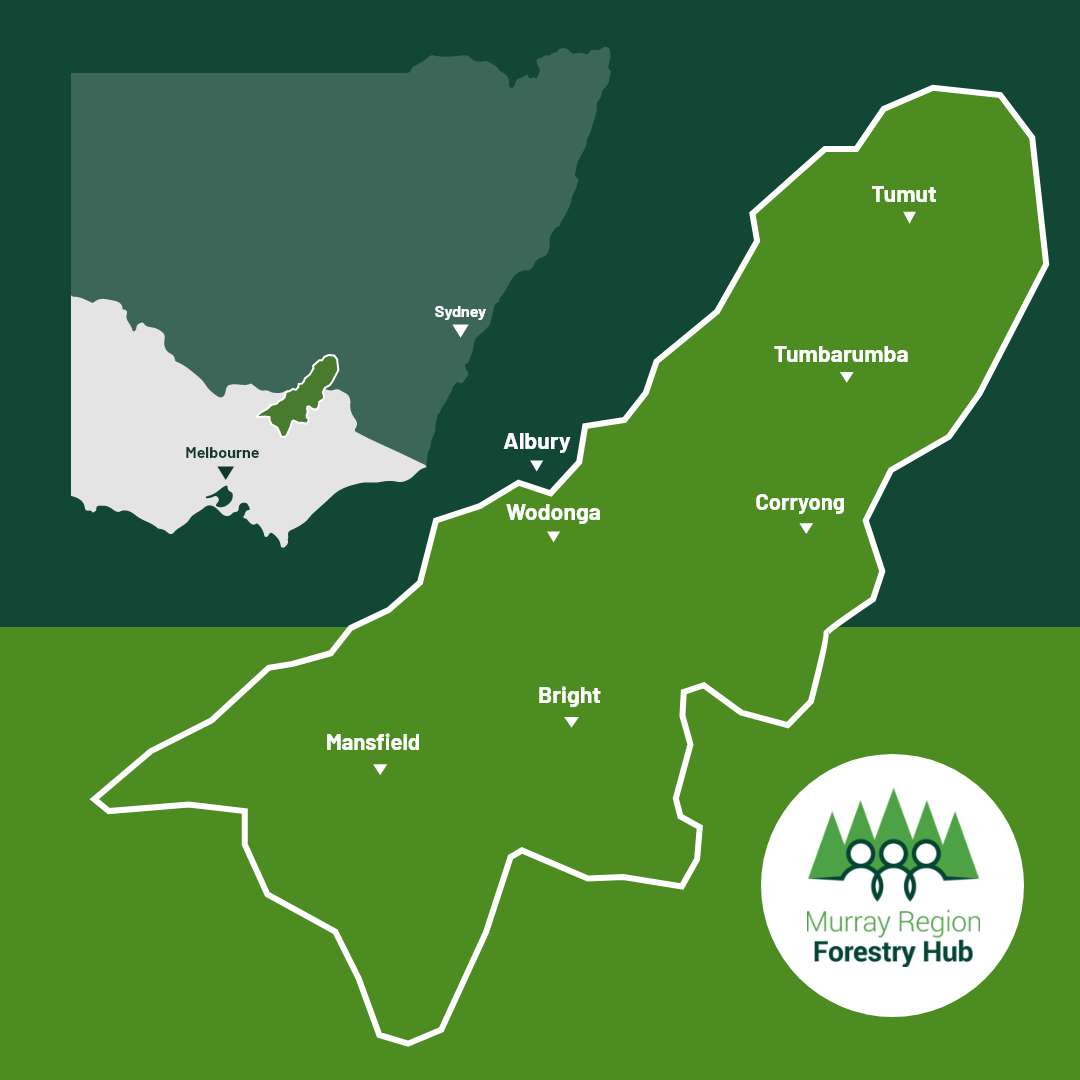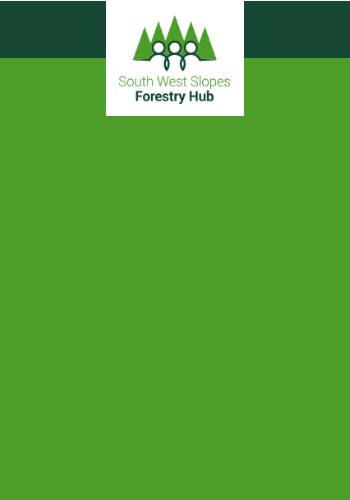Facts & FAQs
Frequently Asked Questions
-
What area is involved in the ‘Murray Region Forestry Hub’? The Murray Region Forestry Hub covers the plantation areas located from Gundagai (NSW) in the north to Mt Buller (Vic) in the south. It lies east of the Hume highway and west of the Great Dividing Range as shown in the map below. A total of 170,000 ha of pine plantations are located within the Hub area.

-
What is forestry? In general terms, ‘forestry’ is the science and practice of planting, managing, protecting and using forests, for community and environmental benefits.
Forestry in our region is based on pine plantations and involves the farming of trees with a long cropping cycle of around 30 years! Each year, millions of trees are planted which are then grown until ready for harvest after which they are all re-planted.
The forest products are logs that are then converted into essential products such as structural timber for house frames, flooring and decking, particle board and plywood as well as paper products used for packaging. Residues are used for landscaping materials, and as a source of bio-energy.
-
What trees are grown in our region? The plantations of our region consist of radiata pine (Pinus radiata), which is a softwood species native to North America and successfully introduced into Australia over 100 years ago.
-
What processing facilities operate in our Hub region? There is sufficient processing capacity in our Hub area to fully utilise all the available annual production of fibre. We have a pulp and paper mill at Tumut (Visy) that can use the pulp logs produced by thinning operations, as well as providing a market for the residues from sawmilling activity.
There is a medium density fibreboard (MDF) plant at Wangaratta that also uses pulplogs and sawmill residues. There are also large high tech sawmills at Tumut (AKD), Tumbarumba (Hyne), Myrtleford (CHH) and Benalla (D&R Henderson).
-
What does forestry contribute to our community? Before the 2019/20 bushfires, forestry supported around 4,830 jobs in SW Slopes region of NSW. When NE Victoria is included, a total of over 7,000 jobs were supported by forestry activities in the Hub area.
Economic activity based on forestry in the Hub area was estimated to have a gross value of output of around $2,500 million each year, and the level of value-added to the economy of the Hub region was around $1,165 m.
-
Have the ‘Black Summer’ fires had an impact? Unfortunately, the fires have had a major impact on the forest industry and communities within the Hub region. Around 47,000 ha of plantation in NSW together with 6,000 ha in NE Victoria was badly burnt. This meant that around 40% of the log resource on which the timber processing activity is based has been lost.
Following the fires, much of this burnt material was ‘salvaged’ and successfully processed before log-quality deteriorated. This enabled the mills to operate at full capacity for 15 months following the fires. Government funding has been provided to assist the harvesting and processing operations.
-
Why is there a shortage of construction timber? There are two main reasons for the current shortage of structural timber (the timber required for the construction of house frames):
- Post-pandemic housing construction boom, spurred by welcome incentives like HomeBuilder.
- A sharp decline in the availability of imported timber.
The loss of resource due to the ‘Black Summer’ fires will undoubtedly exacerbate this situation once reduced quotas are fully implemented in early 2022
-
Are the plantations in our region managed sustainably? Yes they are. Forestry is a classic example of a sustainable activity. This is clearly demonstrated by the fact that some of the Hub area’s plantations have been generating log products for over 100 years and are now supporting the third, 30 year crop. Timber is the only sustainable and renewable building material available.
All stages of the growing, harvesting, transport, and processing of the timber produced from plantations are closely regulated, by both government legislation and voluntary Codes of Practice.
Both growers and processors within our Hub area have taken the necessary steps to register their operations under external accreditation schemes such as FSC (Forest Stewardship Council) and PEFC (Programme for the Endorsement of Forest Certification). The auditing of these schemes ensures that all activities are diligently performed in order to comply with the standards set by the relevant certification.
You can learn more about the environmental credentials of the industry by checking out the resources available on the following web site.
-
Why should we use more wood? Wood is the only sustainable structural material which can enable substantial decarbonisation of the built environment based on existing business models and proven technology, providing vast carbon sinks in our rural areas and carbon stores in our cities.
Wood is a naturally renewable material which:
- Sequesters carbon in forests as trees grow.
- Stores carbon in harvested wood products.
- Substitutes for carbon-intensive materials such as steel, concrete and plastics.
- Drives Sustainable Forest management leading to greater growth.
- Contributes to a Circular economy as wood products can be reused, recycled, and recovered for low-carbon energy at end-of-life.


